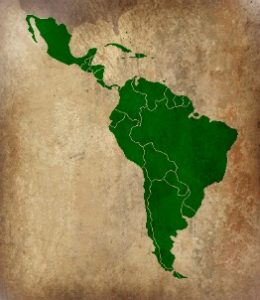Latin America Green News

By Amanda Maxwell, La Onda Verde de NRDC
Chile
Endesa and Colbún, the companies behind the controversial mega-dam project HidroAysén, have announced that the Committee of Ministers has until the end of April to reach a decision on the 35 claims submitted against the project. The statement comes two days after the Committee announced that it will not meet in March to review the claims, delaying their decision yet again. If the case is not settled in April, the companies will consider legal recourses to force a final decision. (Diario Financiero 3/8/2013; La Tercera 3/6/2013)
Although Santiago has made strides to combat air pollution—implementing new standards for public buses and prohibiting the burning of firewood during winter—air quality in the Chilean capital remains far below international standards. Measurements recorded during the first two months of this year show pollution levels between two and three times the “safe” limit recommended by the WHO. (The Santiago Times 3/1/2013)
Power generation from coal reached an unprecedented 30 percent of the SIC’s energy matrix, shows new data from the central electric grid’s system operator. The figure, which reflects an average for the first two months of this year, is partly a result of reduced hydroelectric production due to low snowmelt and dropping water levels in some of the country’s largest reservoirs. (Nueva Minería y Energía 3/6/2013)
With an aim to divorce economic growth from higher electricity consumption, Chile is seeking to meet 12 percent of the projected rise in domestic demand with improvements in energy efficiency by 2020. The target represents about 1,500 MW of avoided capacity increases, equivalent to nearly four thermal power generation plants or more than half of the proposed capacity of HidroAysén. (Pulso 3/5/2013)
Costa Rica’s Ministry of Energy and Environment has tightened environmental controls in the Caño Negro, a nationally protected wildlife refuge located in the country’s north. The enforcement is a response to increased illegal logging, fishing and pollution in the area. In just January and February of this year, authorities seized 13,000 inches of wood, 665 fish and two turtles, and issued closure orders to eight pineapple plantations that were encroaching on park territory. (El Financiero 3/5/2013)
Seven businesses have become the first to receive carbon-neutral certification from Costa Rica’s Ministry of Energy and the Environment—a label they can place on their products and use in marketing materials. The companies, which include Florex, Café Britt, Travel Excellence, Geocycle, BAC, Euromobilia, and Mapache Rent a Car, reduced their carbon dioxide emissions by an average of 18 percent to receive the certification. (El Financiero 3/7/2013)
Mexico
The municipality of La Paz, Baja California Sur, is home to at least 33 active gold mining concessions, confirms the Mexican Ministry of the Economy. The concessions, which cover nearly 60,000 hectares, worry environmental groups because the city lacks a current Local Ecological Program (POEL). Development of the POEL—an instrument that is to govern natural resources exploitation in the area—has been dragging since 2006. (Peninsular Digital 3/6/2013)
Marking the Global Energy Efficiency Day, the Ministry of Environment and Natural Resources has published an updated guide for renewable energy development. The resource includes 24 programs—a mix of public, private and international—that can provide technical and financial assistance to local governments and civil society organizations that pursue green energy projects. Last month, several organizations promoting renewable power generation called on the government to provide clarity regarding the regulations that govern investment the sector. (Tiempo 3/5/2013; El Economista 2/21/2013)
Nissan has announced that it will begin using wind energy to power its assembly plant in Aguascalientes, aiming to meet 50 percent of the facility’s total energy requirement through the renewable resource by 2016. In 2012, it became the first automotive plant in the world to introduce electricity generated from biogas into its manufacturing process. By the year’s end, biogas accounted for 9.3 GWh of electricity, or 5 percent of its total consumption. (Grupo Fórmula 3/6/2013)
Regional
Brazil, Colombia, Costa Rica, Ecuador, and Honduras have joined the E.U. and the U.S. to call for tighter regulations on the capture and trade of several shark species. The countries are seeking the addition of scalloped hammerhead sharks, porbeagle shark, oceanic white tip shark to Appendix II of the Convention on International Trade in Endangered Species of Wild Flora and Fauna (CITES), which is being negotiated this and next week in Bangkok. The international shark fin trade is placing increasing pressure on the species—100 million sharks are caught annually to satisfy demand, coming primarily from China and Japan. (El País 3/6/2013)
This article was first published in NRDC Switchboard.
Amanda Maxwell is a born and bred Jersey girl, but has lived for varying amounts of time in Michigan, Vermont, Rhode Island, New York, and the Czech Republic before moving to Washington, DC. Prior to joining NRDC she received my Masters degree in International Politics and Economics with a focus in Renewable Energy policy from Charles University in Prague. While there, she gained an appreciation for night running, train travel (especially of the high speed variety), and the local pivo. She received a Bachelors degree in history and Spanish from Middlebury College, and also studied in Buenos Aires.
[Photo by Walmart Corporate]


